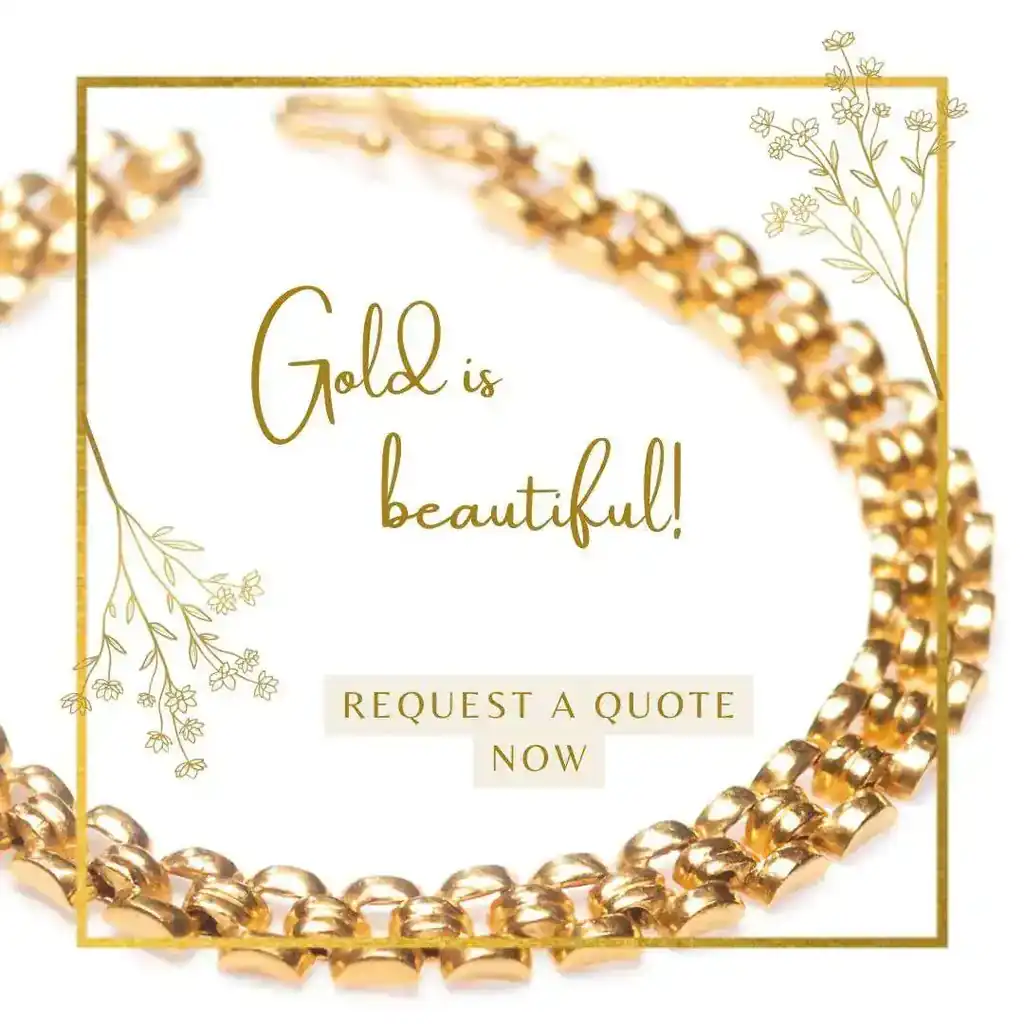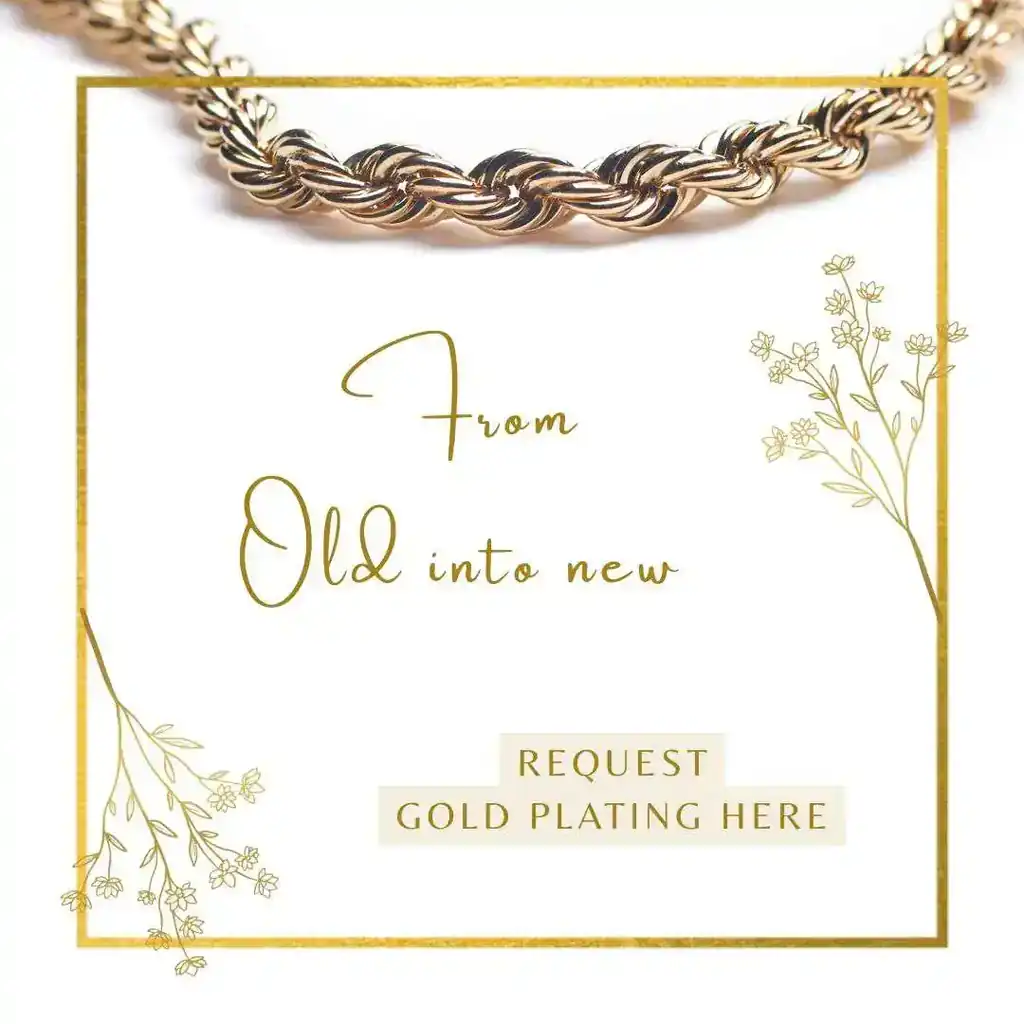Your guide to professional gold plating with a lasting effect
Gold has exerted a special fascination on people for thousands of years. It stands for wealth, warmth, longevity and elegance. So it's no wonder that the desire to have jewelry gold-plated is so prevalent.
But how exactly does it work, which materials are suitable, what methods are available and what should you look out for if you want to have your jewelry professionally gold-plated? In this blog article, we answer the most important questions, provide exciting insights into the process and show you why it's worth hiring a specialist!
Request gold plating now!
Back to top
What does it mean to gold plate jewelry?
Gold plating is the application of a fine layer of gold to another metal. The aim is to achieve the aesthetic properties of real gold without the cost of solid gold. Gold plating is referred to as a "coating", not solid gold. The thickness of the gold layer is a major quality feature and can vary greatly - it is therefore always important to ask how thick the applied gold layer is when gold plating.
The process is used both for new plating and for refreshing older jewelry. It is particularly popular for pieces of jewelry that have lost their original gold plating over time. But even if your taste has changed over time and you now prefer to wear gold instead of silver, gold plating your existing jewelry is a wonderful option for you.
For example, gold plating rings or necklaces is a very popular way to breathe new life into your beloved jewelry!
Get your gold plating quote!
Back to top
What can be gold-plated?
 Which materials are suitable for gold plating?
Which materials are suitable for gold plating?
The substrate material is crucial for successful gold plating. Metals such as gold, silver, brass, copper or stainless steel are particularly suitable, as they accept the gold layer well through galvanic processes.
What cannot be gold-plated?
- Anything coated with titanium nitrite: This applies to most watches, as their cases are usually coated with titanium nitrite. This coating would have to be removed with hydrofluoric acid. As hydrofluoric acid is very dangerous to handle, this requires special approvals and high standards and is not possible in most electroplating companies that offer gold plating for jewelry.
- Everything that is plastic-coated or lacquered: Very inexpensive costume jewelry or even many buckles on handbags are often coated with plastic for longer durability or lacquered for a more beautiful color. Gold plating will not adhere to the plastic coating or lacquer. If the plastic coating or lacquer is removed, the underlying metal is usually unsuitable for gold plating and will not achieve a beautiful result.
- Titanium: Just like titanium nitrite, titanium will only accept gold plating if it is first treated with hydrofluoric acid.
- Jewelry with stones that are only glued in: If the stones in your piece of jewelry are only glued in place, the adhesive may come loose due to the galvanic treatment during gold plating. The stones would then have to be re-set.
- Jewelry with so-called soft stones: The Mohs hardness scale indicates the hardness of stones. The softer the stone, the more susceptible it is to the heat and chemical baths used in gold plating. Pearls, turquoise or lapis lazuli must therefore be removed from the piece of jewelry before gold plating so that they are not damaged. Diamonds, zirconia or garnets, on the other hand, are not affected by gold plating.
- Jewelry with porous or damaged surfaces: If your jewelry already has a very damaged surface, this often leads to uneven results.
Checklist for possible gold plating:
- Is your jewelry made of gold, silver, brass, copper or stainless steel?
- Does the surface have no varnish or coating?
- Is the surface undamaged?
- Does your piece of jewelry not have any stones?
- And if it does, is the stone setting heat-resistant and non-porous?
If your piece of jewelry meets these criteria, the chances of a long-lasting gold plating are good!
Request a free quote for gold plating!Back to top
The most common gold plating methods
 There are several methods of gold-plating jewelry. The best known are:
There are several methods of gold-plating jewelry. The best known are:
1. Galvanic gold plating - jewelry is usually gold-plated using this technique
This is the most common type of gold plating for jewelry. The piece of jewelry is immersed in an electrolytic bath containing gold particles. Under the influence of electricity, the particles are deposited on the jewelry. This method is very precise, enables different layer thicknesses of gold coating and is therefore widely used.
2. PVD gold plating (Physical Vapor Deposition)
A high-tech process that enables particularly hard, abrasion-resistant coatings. PVD is mostly used for tools and technical components, and sometimes also for packaging in the food industry. This technique is hardly ever used for gilding jewelry.
3. Fire gilding (historical)
A formerly very common process using mercury, which is no longer used today for health reasons.
Click here for the offer for gold plating!Back to top
How does the gilding process work in a specialist company?
 A professional gold plating service works in several steps:
A professional gold plating service works in several steps:
- Cleaning and degreasing: The jewelry must be absolutely clean and free of grease so that the gold layer can adhere.
- Electroplating: The jewelry is placed in a gold bath and energized.
- Drying and polishing: After the bath, the jewelry is dried and polished to a high shine.
Specialist companies use precise technology for this and can also take into account special requests such as the layer thickness of the gold or the gold tone (e.g. rose gold or yellow gold).
Fun fact: There is no "real" gold color for gold alloys. Depending on the gold alloy and the company's own alloy composition, the color of the gold can vary. If copper is added to the alloy, the gold becomes darker and richer. If more palladium is added, the gold becomes lighter and shinier. There are countless possibilities and color nuances. If you want to combine your jewelry with existing gold jewelry, it therefore makes sense to include a piece of jewelry as a color sample for gold plating.
Back to top
How much does it cost to have jewelry gold-plated?
 The cost of having jewelry gold-plated depends heavily on several factors:
The cost of having jewelry gold-plated depends heavily on several factors:
- Size of the piece of jewelry
- Gold layer thickness (the thicker, the more expensive, but also the more durable!)
- Type of base metal
- Condition of the jewelry
A simple, small ring with a very thin layer of gold can be gold-plated for as little as around 30 euros. However, especially for rings that are naturally subject to very high abrasion, it makes more sense to use a thick layer of gold. Although this increases the price of gold plating, it also increases its durability.
As a general rule, the larger the surface to be gold-plated, the more the gold plating will cost. For chains, the cost of gold plating can range from around €50 to well over €100, depending on the thickness and length of the chain.
Professional tip: Always ask about the thickness of the gold layer (also known as the micron count) - this has a direct influence on the durability of the gold plating. So always consider whether you want to wear your piece of jewelry every day or only on special occasions. Then you can decide how robust the gold plating you want for your piece of jewelry needs to be.
Back to top
How long does gold plating last and when is it worth refreshing it?
 The durability of gold plating depends on several factors:
The durability of gold plating depends on several factors:
- Thickness of the gold layer
- Material of the piece of jewelry
- Frequency of wear
- Contact with water, perfume, chemicals
- Abrasion to which the piece of jewelry is subject
A 1 micron thick gold plating can last for several years if the jewelry is used occasionally, for example if it is a pendant that is always taken off when showering or sleeping. However, a 1 micron thick gold plating can also be gone after a few weeks if, for example, it is a ring that you wear every day and also prefer to leave on when washing up, gardening or doing other work.
A reputable specialist company therefore always recommends different gold plating thicknesses for different pieces of jewelry and different uses.
Important to know: Yellow gold plating always lasts longer than rose gold plating. This is because the rose gold alloy contains more copper. The copper gives the gold its beautiful red color. However, copper also corrodes faster than other (precious) metals that are otherwise contained in a gold alloy (such as palladium or silver). This is why rose gold plating fades faster than yellow gold plating.
When is it worth refreshing the gold plating?
- When the base color wears through
- If you want to revalue your piece of jewelry
- If you want to give your old jewelry a new color for the sake of sustainability instead of buying new jewelry
- If the emotional value of your piece of jewelry exceeds the cost of gold plating
Back to top
Conclusion: Gold plating increases the value of your jewelry
Whether you want to have a ring gold-plated or a necklace gold-plated: professional gold-plating gives your jewelry a new shine and increases its value.
The cost of having jewelry gold-plated is usually significantly lower than the price of comparable real gold jewelry. In combination with the high durability of the gold plating and a professional result, gold plating jewelry is a sustainable alternative to buying new jewelry.
Do you want to have your jewelry gold plated?
Request a quote now - professional, high-quality and individual.